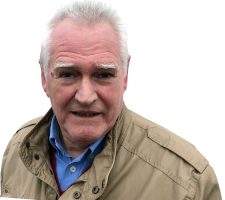search
date/time
 | Yorkshire Times Weekend Edition |

Mike Tilling
Arts Correspondent
1:03 AM 16th September 2023
arts
Review
Classical Music: Phantasy In Blue
Phantasy in Blue
Alban Gerhardt and the inimitable Alliage Quintett offer a wholly new perspective on a variety of favourites drawn from the cello’s established repertoire and beyond.
Tchaikovsky Variations On A Rococo Theme, Op 33; Vivaldi Cello Concerto In A Minor, Rv418 I. Allegro; de Falla Siete Canciones Populares Españolas; Shostakovich Prelude 'Guitars' (Transcription from Ovod 'The gadfly');
Elegy (Transcription from Chelovecheskaya komediya 'The human comedy'); Waltz No 2 (Extract from Suite for variety orchestra); Gershwin Phanstasy in Blue
Hyperion CDA68419
https://www.hyperion-records.co.uk/
Alban Gerhardt and the inimitable Alliage Quintett offer a wholly new perspective on a variety of favourites drawn from the cello’s established repertoire and beyond.
Tchaikovsky Variations On A Rococo Theme, Op 33; Vivaldi Cello Concerto In A Minor, Rv418 I. Allegro; de Falla Siete Canciones Populares Españolas; Shostakovich Prelude 'Guitars' (Transcription from Ovod 'The gadfly');
Elegy (Transcription from Chelovecheskaya komediya 'The human comedy'); Waltz No 2 (Extract from Suite for variety orchestra); Gershwin Phanstasy in Blue
Hyperion CDA68419
https://www.hyperion-records.co.uk/

And Tchaikovsky is the one who features most prominently on Phantasy in Blue, although the title is taken, of course, from Gershwin’s Rhapsody in the same colour. This piece, as many others, is arranged by Stefan Malzew. Gershwin’s master piece is so well known and so carefully crafted that making a new arrangement seems superfluous, but his adaptation of Tchaikovsky’s Variations on a Rococo Theme makes much more sense. Melzew succeeds in making Tchaikovsky even more accessible.
The Rococo Variations occupy the nine opening tracks and manifest the versatility demanded by any set of ‘variations’. For example, the seventh (Allegro Moderato) features some athletic cello playing (Alban Gerhardt) and injects a welcome leavening of humour, while the ninth (Coda, Allegro Vivo) demands some dexterous fingering.
Portmanteau CDs are not that unusual, but this one does have a particularly beguiling list of contributors: apart from Tchaikovsky, there is Vivaldi, de Falla, Shostakovitch, as well as Gershwin. It is the 'blue' element that lurks behind each work, making for a cohering theme. However, none make this explicit, except in Gershwin.
Following Tchaikovsky, we move to an earlier century and the Baroque for our next dose of ‘blueness’. The Vivaldi Cello Concerto in A Minor (Alban Gerhardt) has some of the exuberance we have come to expect from this composer. The CD cover features a bird on the wing, and as it soars above, it is Vivaldi that most epitomises its flight.
The Shostakovich tracks come from a number of sources, with Suite for Variety Orchestra and Waltz No. 2 being the most instantly recognisable. This piece suits the four saxophones of the ensemble perfectly. It is certainly a long way from the ’Socialist Realism’ music demanded of Shostakovich in his early days of composing.
The de Falla ( Siete Canciones Populares Españolas;) is the most distinctive in its national origin. Flamenco prowls behind every note, though not explicitly so.
Finally, we move to the keynote composer and Gershwin’s Rhapsody in Blue. Listeners must concentrate on the music, excluding all interference, as the theme is used to distraction as background and as copyright-free advertising fodder. Such humiliation may befall any composer, of course, but the greatness of the music shines through.
As always with Hyperion, the recording is of the highest quality.
If you are looking for an engaging CD that does not take the listener for granted but injects some challenge into the experience, then this is for you.